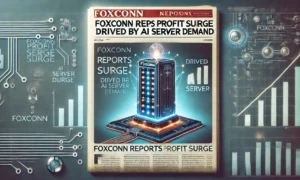In a significant move poised to shake up the rapidly growing quick-commerce sector in India, Amazon has officially entered the market with the launch of its 15-minute delivery service. This bold initiative comes in response to the surging demand for hyper-convenient shopping experiences and the increasing popularity of platforms like Blinkit, Zepto, and Swiggy, which have dominated the quick-commerce space in recent years. Amazon’s strategic pivot into this new segment of e-commerce is designed to address the evolving consumer preferences for faster deliveries and seamless shopping experiences. With India’s online retail landscape rapidly transforming, Amazon’s entry into quick commerce could be a game-changer, signaling a new era of convenience and competition in the market.
The Emergence of Quick Commerce in India
Quick commerce, also known as q-commerce, refers to the delivery of everyday essentials and groceries within an ultra-fast time frame, typically 10-30 minutes. The demand for such services has exploded in recent years, driven by a combination of urbanization, busy lifestyles, and growing internet penetration. With the rise of smartphone use and an increasingly tech-savvy population, Indian consumers have become accustomed to quick and hassle-free shopping experiences. The pandemic further accelerated this trend as people became more reliant on home delivery services for groceries, food, and other daily necessities.
The quick-commerce market in India has become increasingly competitive, with players such as Blinkit (formerly Grofers), Zepto, and Swiggy’s Instamart offering hyper-local delivery services that focus on speed. These companies have built sophisticated supply chains, leveraging micro-warehouses, technology, and local delivery networks to meet the demand for fast deliveries. The increasing reliance on these services for everything from groceries to snacks has made quick commerce one of the most exciting and rapidly growing sectors in the Indian e-commerce landscape.
Amazon, which has long been the dominant force in online retail, has recognized the shifting dynamics of the Indian market and the growing consumer appetite for faster and more convenient services. With this in mind, Amazon’s foray into the quick-commerce sector with a 15-minute delivery service is a direct challenge to these established players, as well as a strategic attempt to capture a larger share of the evolving e-commerce pie.
Amazon’s 15-Minute Delivery Service: What to Expect
Amazon’s quick-commerce initiative in India is centered around its promise of delivering products to customers within 15 minutes of placing an order. The service is expected to cover essential items, including groceries, household products, snacks, beverages, and other daily necessities. The company plans to fulfill orders from a network of strategically located fulfillment centers that are designed to ensure speedy dispatch and delivery.
This ultra-fast delivery service will be available in select cities initially, including top metropolitan areas like Mumbai, Delhi, and Bengaluru, where there is a high concentration of urban consumers and demand for convenience. Amazon’s move into the quick-commerce space will involve leveraging its existing infrastructure, including its vast fulfillment and delivery networks, and enhancing its technological capabilities to meet the stringent requirements of quick commerce.
The key differentiators of Amazon’s 15-minute delivery service will include:
- Wide Product Selection: Amazon will offer a wide variety of products, including household essentials, groceries, snacks, and beverages, aiming to provide a one-stop-shop for consumers seeking quick, convenient deliveries.
- Speed and Efficiency: The 15-minute delivery promise will put Amazon in direct competition with its quick-commerce rivals, who have set similar delivery time benchmarks. To achieve this, Amazon will utilize its vast logistics and technology infrastructure to enable real-time tracking and efficient order processing.
- Seamless User Experience: Amazon will integrate its quick-commerce offerings with its existing e-commerce platform, making it easy for customers to transition between longer delivery times for regular products and faster deliveries for quick-commerce items. This integration will help Amazon maintain its reputation for a seamless and user-friendly shopping experience.
- Leverage of Localized Supply Chains: Just as Blinkit and Zepto have built strong local supply chains to facilitate fast deliveries, Amazon will likely focus on setting up micro-warehouses in high-demand areas to ensure faster dispatch times. These warehouses will be stocked with popular products in smaller quantities, allowing for quicker restocking and faster deliveries.
The Competitive Landscape: Amazon vs. Blinkit, Zepto, and Swiggy
Amazon’s entry into the quick-commerce market comes at a time when the sector is already highly competitive. Blinkit, Zepto, and Swiggy’s Instamart are some of the key players in this space, all of which have capitalized on the growing demand for fast delivery services.
Blinkit (formerly Grofers)
Blinkit is one of the pioneers of quick commerce in India, known for offering ultra-fast deliveries of groceries and daily essentials. The company operates a vast network of dark stores (micro-fulfillment centers) and partners with local delivery fleets to offer 10-15 minute deliveries. Blinkit has raised significant funding to expand its operations and enhance its technology, positioning itself as a market leader in the hyper-local delivery space.
Zepto
Zepto is another prominent player in India’s quick-commerce market. The startup offers a 10-minute delivery service, competing directly with Blinkit and other players in terms of speed. Zepto focuses on using AI-driven technology to optimize delivery routes and improve the efficiency of its supply chain. The company’s promise of ultra-fast deliveries has helped it gain significant traction in major urban markets.
Swiggy Instamart
Swiggy’s Instamart has also emerged as a key player in the quick-commerce space, leveraging Swiggy’s well-established food delivery infrastructure to offer fast deliveries of groceries and essentials. Instamart promises delivery times of under 30 minutes, and the platform’s integration with Swiggy’s food delivery service has made it a popular choice for consumers seeking convenience.
Amazon’s entry into this competitive market is a direct challenge to these companies, and its deep pockets, vast infrastructure, and established customer base make it a formidable competitor. While Blinkit, Zepto, and Swiggy have already developed a strong presence in India’s quick-commerce space, Amazon’s brand recognition, global scale, and advanced technological capabilities give it the potential to disrupt the market.
Why Now? The Changing Consumer Behavior
Several factors have led to the growing demand for quick-commerce services, making it an attractive space for players like Amazon to enter:
- Increased Urbanization: India’s urban population is expanding rapidly, with more consumers living in densely populated areas where convenience and speed are key drivers of purchasing decisions. Quick-commerce services are designed to meet the needs of this growing urban demographic.
- Rising Smartphone Penetration: India has one of the largest smartphone user bases in the world. With internet access becoming more affordable and widespread, more consumers are turning to mobile apps to make purchases. Quick-commerce services capitalize on this trend by offering a fast, easy, and efficient way to shop on-demand.
- Post-Pandemic Shift in Consumer Habits: The COVID-19 pandemic accelerated the shift toward online shopping and home delivery services. While grocery and food delivery services were once considered a luxury, they have now become a necessity for many consumers, further fueling the growth of quick-commerce services.
- Growing Demand for Convenience: The modern consumer is increasingly prioritizing convenience. Whether it’s the desire for a quick snack, last-minute groceries, or household essentials, the need for fast, hassle-free shopping has made quick-commerce services an essential part of daily life.
Amazon’s Strategy for Quick Commerce in India
Amazon’s foray into quick commerce is a strategic response to the growing demand for convenience. The company is no stranger to the Indian market, where it has invested heavily in its e-commerce infrastructure, logistics, and technology. To succeed in the competitive quick-commerce space, Amazon will need to focus on several key areas:
- Robust Supply Chain and Logistics: Amazon’s existing logistics network will be a significant advantage in quick-commerce operations. The company will need to optimize its fulfillment centers and develop micro-warehouses to cater to quick deliveries.
- Technological Integration: Amazon’s experience with data analytics, AI, and machine learning will help streamline operations, enhance delivery efficiency, and personalize customer experiences. AI-driven demand forecasting, route optimization, and real-time tracking will be essential to ensure timely deliveries.
- Local Partnerships: While Amazon has its own delivery network, it may also form partnerships with local delivery fleets to increase efficiency and meet demand surges.
- Pricing and Consumer Engagement: Amazon will need to carefully position its pricing strategy to compete with the established players while maintaining its reputation for value and convenience. Aggressive pricing, customer-centric offers, and exclusive products could help Amazon build a loyal customer base in the quick-commerce segment.
The Financial Outlook
While the financial details of Amazon’s investment in quick commerce remain undisclosed, industry analysts estimate that the company will need to invest heavily in infrastructure, technology, and marketing to compete effectively with established players. The overall market size for quick-commerce in India is projected to grow at a compound annual growth rate (CAGR) of over 30% in the next few years, which presents a significant growth opportunity for Amazon.
Conclusion: The Road Ahead for Amazon in Quick Commerce
Amazon’s entry into the quick-commerce market in India represents a strategic shift that could redefine the competitive landscape. By leveraging its technological capabilities and vast logistics network, Amazon aims to provide an ultra-fast, seamless shopping experience that meets the growing demand for convenience. While the competition remains fierce, Amazon’s brand strength, infrastructure, and customer loyalty give it a distinct advantage. As consumer preferences continue to evolve and the quick-commerce sector expands, Amazon’s foray into this space will likely play a pivotal role in shaping the future of retail in India.


